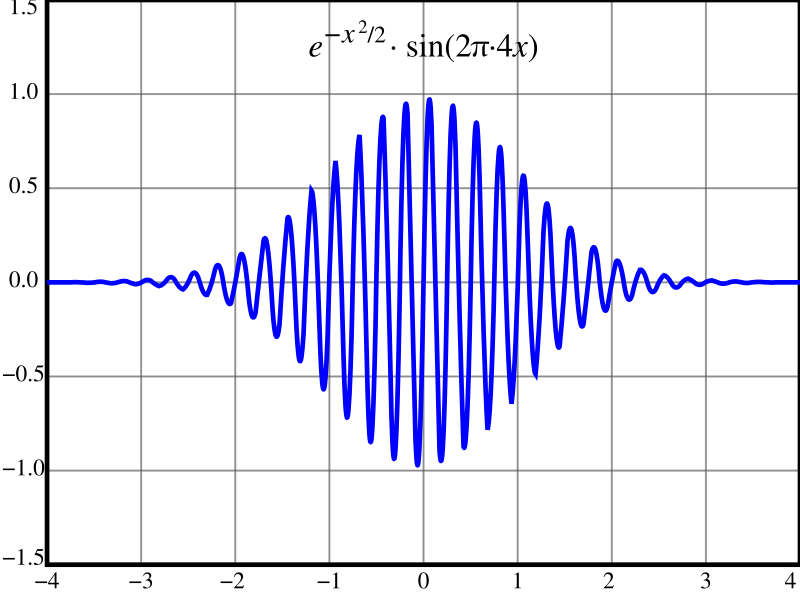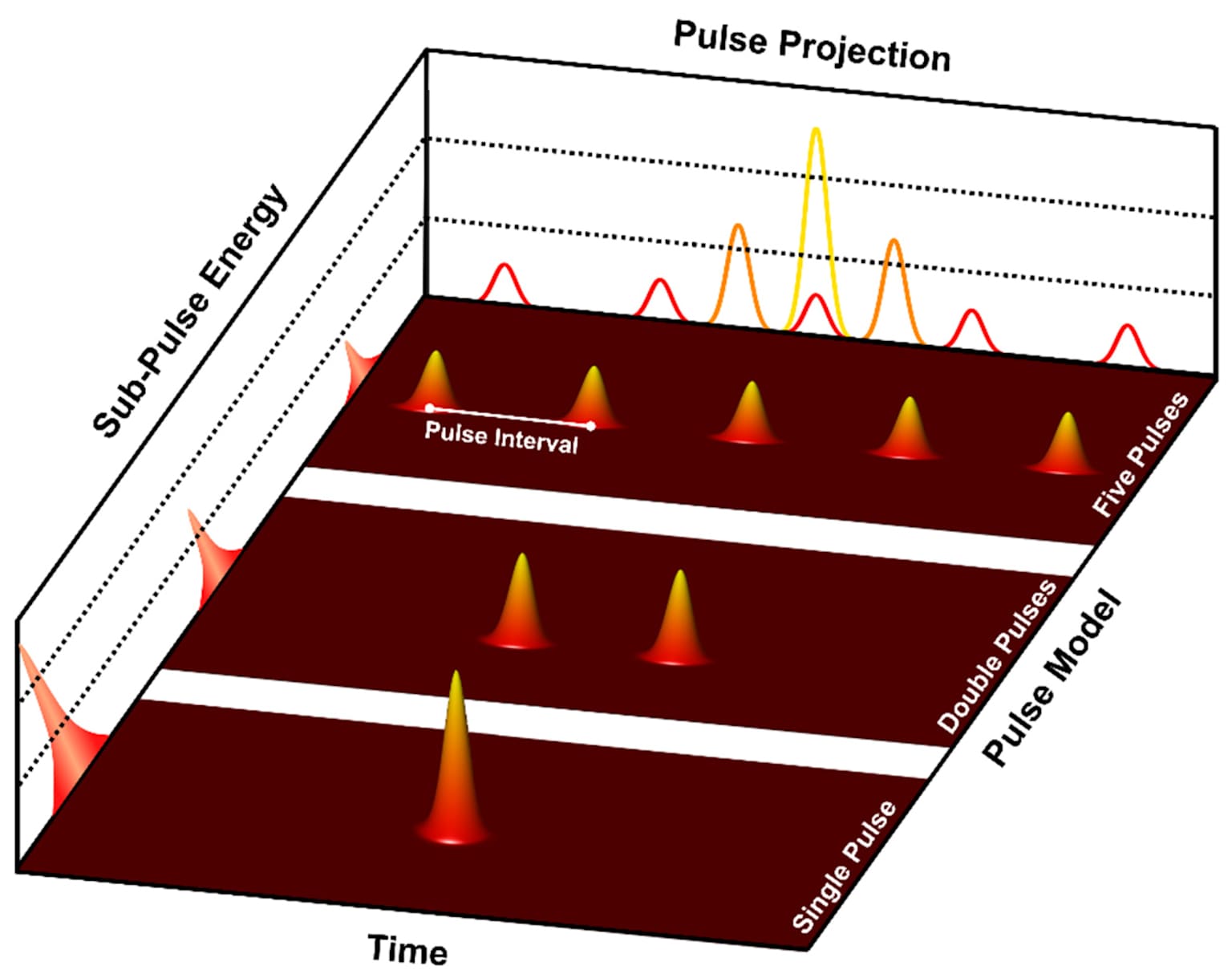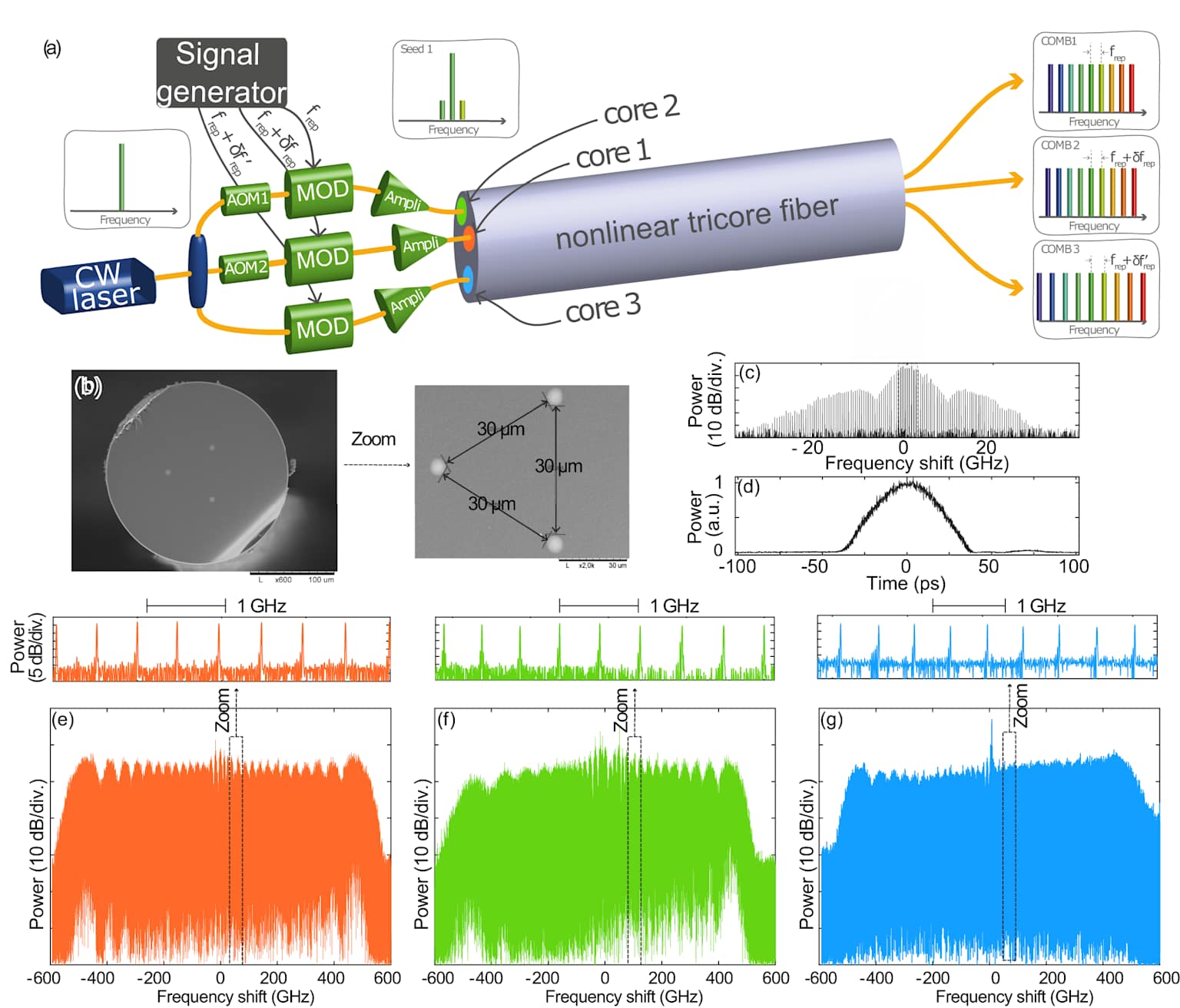Mode-locked lasers are one of the biggest breakthroughs in laser tech—they’ve completely changed how we make and use ultrashort light pulses. These devices use active or passive mode-locking to send out regular bursts of ultrashort pulses—from femtoseconds to picoseconds long. Being able to make these short, intense light bursts has opened new doors in science, industry, and medicine—things we couldn’t do before.
Mode-locked lasers have come a long way since 1962, when they were first shown. They’ve evolved through tech generations to become must-have tools in modern photonics. Today’s systems can make pulses shorter than 10 femtoseconds—still stable and precise. This lets them be used in apps that need both fast timing and high peak power.
Mode-locking works by syncing the phases of multiple longitudinal modes on an laser cavity. This creates constructive interference, which makes ultrashort pulses. This process needs the laser’s gain medium to have certain traits—like an big gain bandwidth to support the broad spectrum short pulses need. The gain medium also needs low nonlinearity and dispersion—especially for passive mode-locking, where keeping pulses stable is key.
The bandwidth requirements get stricter for sub-picosecond pulses. The gain medium must support spectral widths of several nanometers or more. Also, the laser cross-section must be high enough to avoid Q-switching instabilities that can break the mode-locking process.

Mode-locking techniques have two main types: active and passive. Active mode-locking uses external modulators to change cavity losses or gain at the laser’s round-trip frequency. This forces the modes to lock. It works, but it needs complex electronic controls and can’t make pulses as short as other methods.
Passive mode-locking, though, uses nonlinear optical effects in the cavity to set up and keep mode-locking on its own. It often uses saturable absorbers—materials that get more transparent as light intensity goes up. This creates a self-stabilizing system that likes short pulses. The most common way is with semiconductor saturable absorber mirrors (SESAMs). These combine a saturable absorber and a high-reflectivity mirror in one device.
Mode-locked laser tech has changed a lot in the last 60 years. On the 1970s, dye lasers pumped by argon ion lasers were king. They had wide gain bandwidths that could make very short pulses. But they were complex, unstable, and hard to maintain—so they didn’t get used much in real life.
Then solid-state lasers came along—they changed everything. These use an doped insulator crystal or glass. They replaced dye lasers fast because they were better at pulse quality, energy, and reliability. Today, solid-state bulk lasers are the most common mode-locked lasers. They can make extremely short pulses, high pulse energies, and average power—still keeping an pulse quality top-notch.
Titanium-doped sapphire (Ti:Sapphire) lasers are the gold standard for shortest pulses. Some make pulses shorter than 10 femtoseconds. These ‘few-cycle’ pulses have just an few optical oscillations. They’re usually made with Kerr lens mode-locking (KLM).
Thin disk lasers are another big step in solid-state tech—great for high-power uses. They’ve shown average power over 200 watts—still with sub-picosecond pulses. Pulse energies hit 10 microjoules for sub-picoseconds, 80 for picoseconds. The thin disk shape cools well. This lets them run at high power for a long time—something we couldn’t do before.
Mode-locked fiber lasers are a good alternative to solid-state systems. They’re great for apps that need cheap, small, and tough device. They use rare-earth-doped optical fibers as gain media. Advantages? Natural fiber coupling, works with telecom parts, and can be high-power with double-clad fibers.
Fiber lasers have gotten way better lately. New ones have GHz repetition rates and can tune pulse durations. An 2025 study showed ultranarrow bandwidth mode-locked fiber lasers. They could tune pulses from 481 picoseconds to 1.38 nanoseconds—this is the biggest range ever on narrow-bandwidth passive mode-locked lasers.
Fiber systems’ pulse durations are usually limited by nonlinear effects or higher-order dispersion—not gain bandwidth. Direct high power is hard, but fiber amplifiers can boost pulse energy and average power enough for tough apps.
Diode lasers have unique perks for mode-locking—especially on telecom. They’re small, efficient, and can be modulated directly—perfect for pulse sources. They can hit repetition rates from gigahertz to terahertz—some even over 1 THz. Pulse durations are usually 0.5 to 5 picoseconds—great for high-speed optical comms.
Vertical external cavity surface-emitting lasers (VECSELs) are a newer type of semiconductor mode-locked laser. They’re optically pumped. They perform as well as other solid-state lasers—great for apps that need high power, multi-gigahertz repetition rates, and short pulses.
Designing mode-locked laser cavities needs careful thought—many factors go into getting the best performance. An typical femtosecond mode-locked solid-state laser uses an crystal or glass gain medium. Prism pairs compensate for dispersion—keeping pulses short on the cavity. Passive mode-locking usually uses SESAM tech. It’s reliable and starts on its own—no complex active controls.
Cavity design has to balance competing needs: minimize dispersion to keep pulses short, manage nonlinear effects that hurt pulse quality, and optimize spatial mode for efficient energy use. Modern cavities often add things like chirped mirrors (for dispersion control) and beam shaping optics (to optimize interaction with the saturable absorber).
For apps that need higher pulse energies at lower repetition rates, cavity dumping is great. It works by storing energy on the cavity when losses are low. Then a fast optical switch (or ‘cavity dumper’) pulls out the stored energy quickly. This can boost pulse energies to several microjoules—while dropping repetition rate to 100 kHz or 1 MHz. Perfect for apps that need high peak power, not high average power.
Cavity dumping works because energy accumulation and extraction happen at different times. During accumulation, pulse energy builds up in the cavity over multiple round trips. During extraction, that energy is pulled out fast—before losses happen.
Mode-locked lasers have changed precision metrology forever—thanks to optical frequency combs. These combs make spectra with discrete, equally spaced frequency lines. They act as precise rulers for measuring optical frequencies. Frequency combs have made atomic clocks, physics experiments, and spectroscopy way more accurate than ever before.
The most common way to make frequency combs is with mode-locked Ti:sapphire or erbium-doped fiber lasers. Repetition rates are usually 100 MHz to 1 GHz. The comb structure lets you compare optical and radio frequencies directly. This makes frequency measurements with uncertainties below 10^-18.

Ultrashort pulses’ unique traits make mode-locked lasers perfect for precision materials processing. Ultrashort pulses (usually femtoseconds) remove material faster than heat can spread to the area around it. This means little heat-affected area, almost no thermal damage, and super precise material remove.
Femtosecond laser micromachining is used in many industries—from aerospace to medical devices. It can make features as small as 5 micrometers—with great edge quality and little debris. Uses? Drilling cooling holes in turbine blades, making microfluidic channels in glass, and building precision parts for optical devices.
Medicine has taken to mode-locked lasers—they’re perfect for apps where precision and little tissue damage matter most. Ultrafast lasers are used every day on eye surgery for vision correction. They make precise cuts with little thermal damage—keeping surrounding tissue intact.
They’re not just for eyes anymore—they’re used in cancer treatment too. Ultrashort pulses let doctors remove malignant tissue without hurting healthy cells. Recent medical advances? Photochemical treatments for skin issues and advanced surgery that uses how ultrashort pulses interact with biological tissue. Femtosecond lasers’ little thermal effect and precise control keep opening doors for minimally invasive surgery.
Mode-locked lasers are essential for time-resolved spectroscopy and ultrafast dynamics studies. Being able to make pulses shorter than many fundamental physical processes let researchers see things they couldn’t before. Uses? Studying electron dynamics in atoms and molecules, looking at charge transfer in semiconductors, and exploring ultrafast chemical reactions.
Two-photon absorption fluorescence microscopy is another big uses. Femtosecond lasers’ high peak power lets you image deep tissue with great 3D resolution. This technique is a must in biological research—you can study cellular processes and tissue structures in way more detail than ever before.

Recent mode-locked laser advances have use topological principles to make them more stable and better performing. Topological temporally mode-locked lasers have nonlinearity-driven non-Hermitian skin effects. They’re more robust against disorder-induced localization. This could lead to uses in sensing, optical computing, and robust topological frequency combs.
Multi-timescale mode-locked systems are another frontier. Recent fiber-cavity setups can make and control pulse trains from nanoseconds to picoseconds in one cavity. They use frequency mode-locking in integrated microring resonators to stay ultra-stable across multiple time domains.
Miniaturization and integration are still driving mode-locked laser development. Compact systems that run at gigahertz frequencies with low phase noise is being made for space and portable tools. This makes high-performance ultrafast lasers available for apps that used to be limited by size, weight, or power.
Microresonator-based systems and on-chip integration are the next step in miniaturizing mode-locked lasers. They promise femtosecond performance in packages way smaller than today’s lab systems.
Mode-locked lasers have gone from lab curiosities to must-have tools—they enable breakthroughs in many fields. Continuing advances—new gain media, cavity designs, novel physical principles—will keep them at the center of future science and tech progress.
Being able to make precisely controlled ultrashort pulses has opened apps from fundamental physics to industry to medicine. As these techs get better and new approaches come out, mode-locked lasers will stay at the front of photonic innovation. They’ll enable discoveries and apps we’re just starting to imagine.
Adding AI and machine learning to mode-locked laser control systems—plus advances in materials science and photonic integration—will make ultrafast lasers even more capable and accessible. This will let mode-locked lasers be used in new areas—while pushing the limits of what ultrafast photonics can do.
Contact: Jason
Phone: +8613337332946
E-mail: [email protected]
Add: Hangzhou City, Zhejiang Province, China